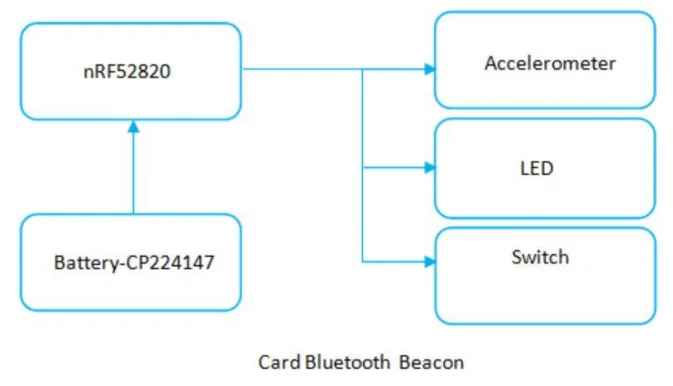In today’s world, businesses are constantly looking for new ways to engage with their customers and improve their operations. Traditional methods such as advertising and customer relationship management (CRM) systems are often expensive and ineffective.
Bluetooth beacons offer a new and innovative way for businesses to connect with their customers and assets. These small devices can be used to transmit signals to nearby smartphones and other devices, allowing businesses to track customer movements, deliver targeted promotions, and automate tasks. We have answered all these questions in this Beacons 101 article, helping you to fully understand bluetooth beacons.
What is a Beacon?
A Beacon is a small, wireless, one-way hardware transmitter that uses Bluetooth Low Energy (BLE) 4.2/5.0/5.2 protocols to transmit a unique identifier along with any other signal (data) to nearby Bluetooth-enabled devices. BLE beacons can transmit data over short distances with high accuracy, which can be helpful for a range of use cases.
Simply put, Beacons connect and transmit data (signals) to smart devices making location-based interaction and searching more accurate and easier.
Beacons often come in various forms, including the following:
- Outdoor waterproof beacons
- Keyfob beacons
- Card beacons
- Wearable beacons
- Low-powered BLE tags
- Industrial-use and consumer-grade beacons, etc.
What’s Included Inside a Beacon?
A Bluetooth Beacon is a very tiny device with a simple hardware design.
When you crack it open, you won’t find a bunch of wires inside. Instead, you will see a microprocessor, a radio, and a small battery (often a lithium-ion battery).
Some beacons may even have built-in sensors. For example, adding an accelerometer helps beacons in asset tracking to detect whether this asset is moving and when the asset is stationary, it may enter sleep mode to save energy.
What Does a Beacon Transmit?
A Beacon often transmits a unique identifier, such as the Universally Unique Identifier (UUID), together with additional data like minor and major numbers and sensor data. This data is formatted according to protocols, such as Eddystone or iBeacon.
Read more: How do bluetooth beacons work?
The Beacon continuously transmits this data using BLE (Bluetooth Low Energy) technology, enabling bluetooth-enabled devices like a Bluetooth gateway to detect and interpret the transmitted data/signal. The detected signal/data enables various applications, such as proximity marketing, location-based services, and asset tracking.
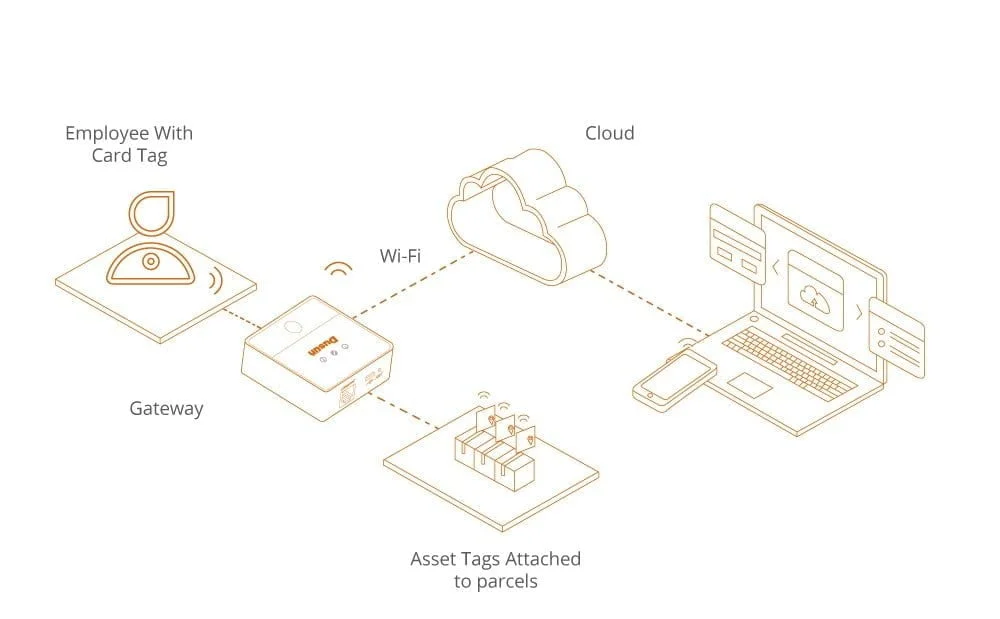
How Does a Beacon Work Technically in a Location Tracking System?
Beacons can be attached to every object/asset that needs to be traced/tracked. Every beacon transmits signals containing unique identifiers at regular intervals using the BLE (Bluetooth Low Energy) technology to the Bluetooth-enabled devices, such as BLE beacon gateways.
When the BLE gateway detects and receives signals from the Beacons within its range, it processes the signal strength and transmits it to the positioning server, central server or cloud-based system.
Read More: What is BLE Gateway and How Bluetooth Gateway Works?
The positioning server then uses techniques like trilateration or fingerprinting to calculate the Beacon’s real-time position and coordinates based on the signals received by multiple gateways.
Once the location of the Bluetooth Beacon is determined, it is associated with a particular object/asset tagged with the beacon. This association allows for tracking of the location and movement of the object/asset within the monitored area.
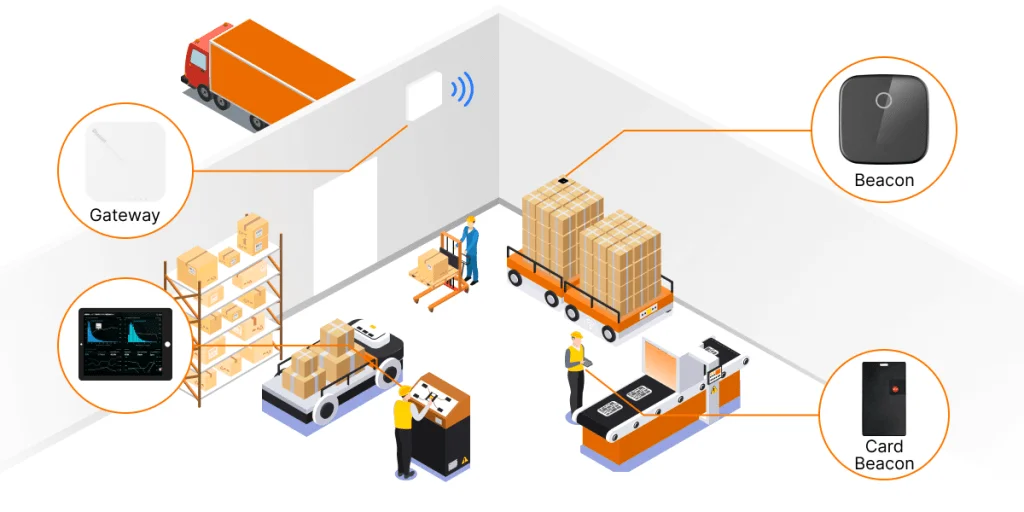
How Does A Beacon Work with a Phone?
Some beacons are directly working with your phones. This working method is frequently used in proximity marketing in the smart retail scenarios. Here is how a bluetooth Beacon work with a phone:
The Beacon continuously transmits its unique identifier together with any additional data at regular intervals. When a BLE-programmed phone comes into the proximity of the beacons, it detects, receives, and extracts the signals from the beacon.
If there is an App, such as an IoT Retail Solution, installed on the BLE-programmed phone, it can receive and process the beacon’s unique identifier. Based on this identifier, the app will trigger various actions, such as collecting data for analytics purposes, sending notifications, displaying location-specific content, etc.
What Wireless Technologies are Used by Beacon Devices?
Here are the three popular wireless technologies used by Beacon devices:
BLE AoA
BLE AoA is a technology used to determine the direction where a BLE signal is coming from. It utilizes the signal processing algorithm and antenna arrays to accurately determine the angle/direction the BLE signal is coming from.
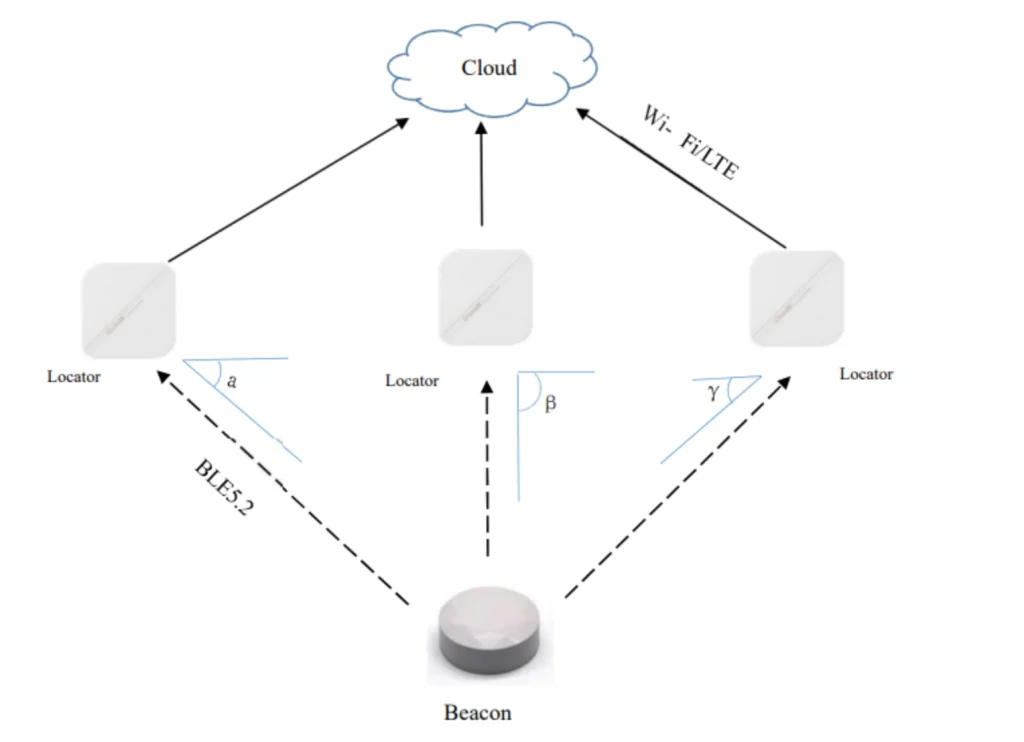
Therefore, BLE AoA offers directional information to enhance location accuracy in a beacon system.
Bluetooth RSSI
Bluetooth RSSI is a technology used to determine the location based on the received BLE signal strength. The Beacon systems estimate the distance between the beacon and the receiving BLE device by measuring the signal strength. This enables location tracking and proximity-based interactions.
UWB
UWB technology provides high-precision ranging capabilities with centimeter-level accuracy. This makes it ideal for applications that require extremely precise location-based services, asset tracking, and indoor positioning.
Read More: Indoor Positioning Technology Comparison: Bluetooth RSSI Vs BLE AOA Vs UWB
What are Beacons Used For?
Beacons are normally used for local-based notifications, proximity marketing, indoor navigation, and data collection. Here are some common use applications:
Indoor navigation in large-area space like museum, airport, and train station
Beacons can be utilized to help visitors navigate through complex/large indoor environments, such as museums, airports, and train stations, by providing location-based guidance and information via smartphone apps. For example the American Museum of Natural History utilizes Beacons to assist visitors in finding what they are looking for.
Marketing for retail shops and stores
Smart retail shops and stores utilize Beacons to deliver targeted promotions and marketing messages to the customers’ phones when they are within the store’s proximity. For example, Macy’s has leveraged the Beacon technology to enhance the customers’ experience and drive sales.
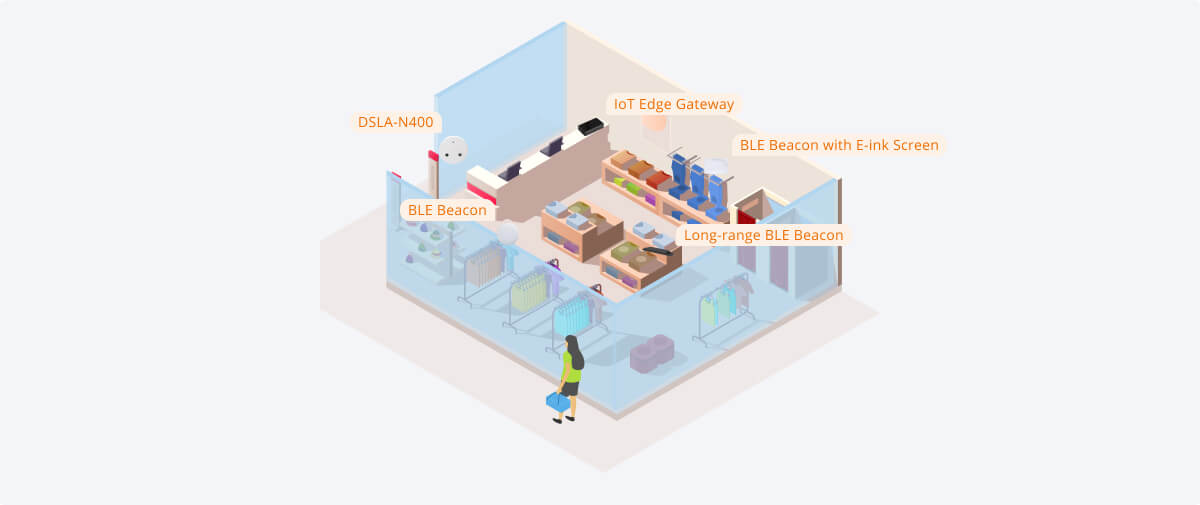
Employee and worker tracking in manufacturing, construction, and healthcare facilities, etc.
Beacons can also be used to track/monitor the movement of employees and workers within a manufacturing, healthcare, and construction facility. For example, According to Wired, Beacons could be used to track employees and enhance social distance in the workplaces.
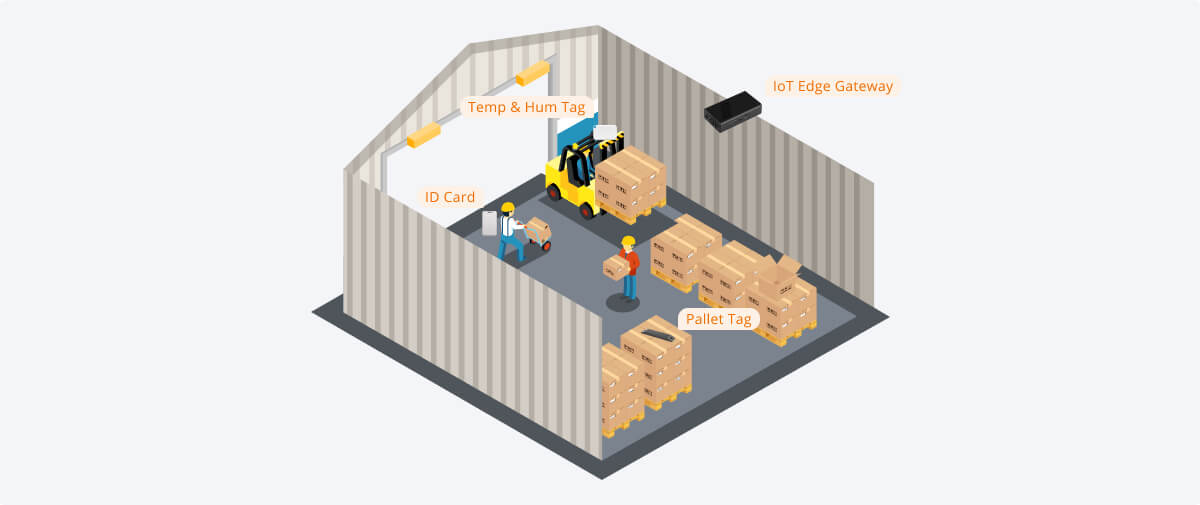
Case Study: Attendance Management System for Construction Sites Using Beacons
What is BLE WiFi Bridge and How Does it Work with Beacons?
BLE to WiFi Bridges are devices that use BLE and WiFi technologies to let Bluetooth-enabled devices connect and communicate with other devices that lack Bluetooth capability. They act as intermediaries between two devices, enabling them to share information and data.

These BLE WiFi Bridges work together with Bluetooth Beacons to provide near real-time location data.
A BLE WiFi Bridge usually includes a transmitter and a receiver. The transmitter gets data/signal from the Bluetooth-enabled device and sends it to the receiver, which can be connected to a device that is not Bluetooth-enabled.
The receiver will then convert the data/signal into a format that the non-Bluetooth Device can understand.
FAQs of Beacon Devices
What is the history of Beacon?
The original Bluetooth technology was initially developed in 1989 by Dr. Johan Ullman and Dr. Nils Rydebeck.
In 2010, BLE (Bluetooth Low Energy) version 4.0 was released, which enabled one-way communication. This is what paved the way for beacon technology.
In 2013, during the World Wide Developer Conference, Apple developed iBeacon as part of iOS 7. This resulted in the development and adoption of BLE-beacon technology. By 2014, more than 50 top 100 retailers in the US began utilizing the beacon technology in their shops/stores for behavioral data gathering and contextual advertising. It was during this time that Google introduced the Physical Web (a Chrome browser-based beacon scanner).
In 2016, Google launched the Eddystone-EID protocol. This protocol is similar to Apple’s iBeacon standard, but with additional features, such as telemetry data, encrypted identifiers, etc.
More recently, there has been a vast range of beacon applications from proximity marketing to asset tracking, with more developments to come!
What is an iBeacon used for?
iBeacon is a Beacon protocol developed by Apple. It is primarily used for location-aware services and proximity-based interactions. It utilizes BLE (Bluetooth Low Energy) technology to transmit to allow iOS devices to constantly scan nearby BLE devices. When an iBeacon identifies nearby devices, such as a Beacon, it will wake up an iPhone (even if the app isn’t running.
iBeacon is also used in stadiums, airports, museums, and other venues to provide contextual information, streamline operations, and enhance visitor experience through efficient communication with iOS devices.
What is an eddystone beacon?
Eddystone is an open BLE (Bluetooth Low Energy) Beacon protocol developed by Google. It was developed in 2015 as an open source alternative to iBeacon, and named after the Eddystone Lighthouse in the UK. Eddystone Beacon enables BLE devices, such as smartphones and other devices to receive signals across short distances, facilitating proximity-based interactions.
How could BLE beacons benefit retail shops and stores?
Wired explains that BLE-Beacons were intended to have a huge influence over the retail world, as they support more responsive messaging.
For example, when a customer is contemplating whether or not to purchase a product in a retail store, the sales representative can only persuade them. If this doesn’t work, the sales rep can’t ask the shopper for their contact information or make follow-ups. However, with Beacons, if the shopper leaves your retail store without making a purchase, your store can automatically send an SMS via mobile offering them a discount if they purchase the product today.
In addition, Forbes explains that Beacons improve the collection of customers’ data, especially in retail shops and stores where GPS location data may not be reliably available. For instance, BLE-Beacons facilitate interaction and communication as far as 160 ft aways, with greater sensitivity than WiFi or GPS tracking methods.
What’s the transmission range of a beacon and can it vary?
The actual maximum transmission range of BLE-Beacon is closer to 70-80 meters (230-260 feet). However, this can vary depending on several factors, such as battery consumption, physical barriers, and hardware capability.
We at Dusuniot, we have a wide range beacons with built-in PA and long range beacons for sale.
Are Beacon Secure?
Beacons can be secure when implemented properly with permission controls, authentication, and encryption. However, without proper encryption, the data/information transmitted by Beacons can be intercepted, which could pose security risks.
What is beacon good for?
BLE (Bluetooth Low Energy) beacons are small wireless devices that are used to send information to other BLE-enabled devices nearby. Their low power consumption makes them ideal for battery-powered devices. They are also small and easy to use, making them ideal for a variety of applications. Additionally, BLE beacons can transmit data over short distances with high accuracy, which can be helpful for a range of use cases.
Take Away
Now that you know everything about Beacons, it is vital to choose the right Bluetooth Beacon for your project. You may want to consider factors such as battery life, supported format, Tx power, packets, price, NFC/RFID, sensors, and interval. If you find it challenging to choose the right Beacon, do not hesitate to contact Dusun IoT’s experts for assistance.









